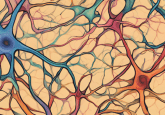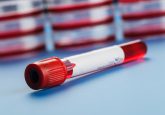Plasma proteins may facilitate dementia prediction 10 years before diagnosis

Through their work on plasma proteomic profiles, a group of scientists from Fudan University (Shanghai, China) and Warwick University (UK) identified 11 plasma proteins that could help predict if a person will develop dementia at least 10 years before diagnosis. Their results were published in Nature Aging.
Dementia represents the weakened ability to remember, think or make decisions. It affects people dealing with daily activities, with Alzheimer’s disease being the most common type of dementia. Currently, healthcare providers can perform cognitive abilities tests, physical exams, blood tests and brain scans to see if there is a case for concern and investigate the cause of dementia. Unfortunately, there is no current cure for neurodegenerative dementias like Alzheimer’s disease. However, the chances of developing dementia and other chronic diseases may be reduced by maintaining a healthy lifestyle.
The research group analyzed blood samples from 52,645 adults without dementia in the UK Biobank between 2006 and 2010. After a follow-up time of 14 years, 1,417 individuals eventually developed dementia. By comparing plasma proteomic profiles and using AI machine learning, the team identified 11 specific proteins found in samples from people who had developed dementia. Among these, GFAP and LTBP2 were the most specific for dementia prediction, with their levels showing changes at least 10 years before dementia diagnosis.
The scientists believe these plasma protein markers could be an important tool for screening middle to older adults, who have a high risk of dementia. This study could advance risk disease prediction using plasma proteomics and make risk assessment for dementia possible in a single blood test. These tools are valuable for early detection, early intervention and disease prevention.
“This model could be seamlessly integrated into the NHS (National Health Service in the UK) and used as a screening tool by general practitioners,” said Jian-Feng Feng, the leading scientist of the research. Feng predicted that early diagnostic tests based on the protein markers identified might even be available in six months. Feng explains that the group’s next step will be “to test the currently available drugs on these subjects who are early diagnosed as risk subjects.”
You may also be interested in:
- Top 5 journal articles on Alzheimer’s disease and biomarkers
- New vaccine found to be key to Alzheimer’s prevention
- First study in African Americans identifies blood biomarkers for Alzheimer’s disease
When clinical symptoms of dementia appear in patients, networks of brain cells have already been damaged as the disease progresses, making meaningful intervention and treatment extremely challenging at this stage. These biomarkers may change the way in which dementia can be managed as they allow early intervention years before diagnosis.
“That’s when we will have the power to find a cure or nip neurodegeneration in the bud. It has to be before it starts or at the very earliest changes. Waiting until we can measure symptoms in clinical assessments puts us way behind the eight-ball of meaningful medical treatment,” commented Karen D. Sullivan, Clinical Neuropsychologist at Pinehurst Neuropsychology Brain & Memory Clinic (NC, USA).
Source: Guo Y, You J, Zhang Y et al. Plasma proteomic profiles predict future dementia in healthy adults. Nature Aging. 4, 247–260 (2024).






